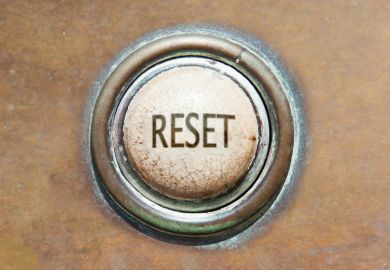From research integrity through vaping, infant death and mass graves, many of the researchers shortlisted for this year’s Maddox prize for promoting sound science and evidence have something in common: their heavy lift is with the institutions of science and policy more than with the public discourse.
At least two of those shortlisted – Carola Vinuesa of the Francis Crick Institute and Patrick Ball of the Human Rights Data Analyst Group – have fought to get evidence into legal systems. John Nkengasong of the Africa Centres for Disease Control has challenged the inequities in the evidence used to make policies for Africa, and Shiba Subedi, a seismologist at the Nepal Academy of Science and Technology, has worked to make earthquake research more inclusive and relevant to Nepal’s demographics.
Flaws in how research is published and rewarded have been called out by Ben Mol, professor of obstetrics and gynaecology at Monash University in Australia; Kelly Cobey, a heart doctor and open science advocate at the University of Ottawa; and Sholto David, a molecular biologist with a PhD from Newcastle University.
The list covers challenges to the communication of sound science from employers, journals, governments, research systems – and scientists who should know better. Where we might have expected nominations to illustrate the prevalence of online attacks on researchers or the continuing use of SLAPPs (strategic lawsuits against public participation), this year many of the battles seem to be with the institutions of science itself.
The Maddox Prize, established in 2012 by Sense about Science and Nature Awards, is unique among science and communication prizes. It recognises not just the value to society of research communication but the bravery and perseverance of researchers facing hostility, lawsuits, threats and more. Every year it receives nominations from all over the world, and the picture that emerges is a lens on research in society.
It is a muddy lens for sure, with the many factors that can determine prize nominations, but the prize nominees have throughout the past 12 years offered up warnings about the growing and changing pressures facing researchers who step into the public arena.
Some are thrust there by a sudden interest or politicisation in the issue they work on, such as peat forests or body dysmorphia. Some come willingly, only to find the rules of engagement turn sour. This included the medical writer Riko Muranaka, awarded the prize in 2017 for exposing the flaws in slides of mouse brain slices paraded by a senior medic as evidence of harm caused by the HPV vaccine – “evidence” that had caused uptake of the vaccine in Japan to plummet from more than 70 per cent to just 1 per cent. Riko was met not with a scientific row but with a lawsuit, cancellation of a book contract and threats.
Similarly, one of this year’s shortlisted nominees, Ann McNeill of King’s College London, whose work on teenage smoking is the global reference point for smoking prevention and cessation, has found herself accused of “bad science” by medics who have the avenues but not the inclination to back up that claim with scientific evidence.
It won’t surprise anyone that about eight years ago, alongside the SLAPP suits and defamation threats raining down on researchers who questioned corporate activities, online harassment of researchers became a common feature of nominations. Many earlier nominees had endured vexatious reports to their professional bodies and nasty online comments. We saw new types of vexatious complaints aimed at closing down researchers’ social media channels and, worse, new targeting of universities’ social media in an attempt to threaten a researcher’s job, as well as targeting of their friends and colleagues.
It seemed to some researchers in contested subjects that online communication had vastly increased the avenues and amplification of attacks. When the pandemic broke out, this experience went mainstream, and it seems that universities are now taking an interest in what to do about it.
Do this year’s nominations similarly tell us about the challenges ahead? They certainly tell a story of frustration with shoddy behaviour and of institutions being a barrier to the communication of sound science and evidence. Ben Mol’s work to communicate evidence in obstetrics and gynaecology would no doubt be much simpler if he didn’t have to battle journals and professional bodies over the persistence of misleading claims along the way. John Nkengasong, and others in the field of Aids research, would find it a lot easier to communicate about public health measures if the research data that institutions used reflected the countries they serve.
Perhaps the issues raised by this year’s shortlist indicate that the practices and institutions of research need to catch up with the efforts of researchers to bring evidence into all areas of public life around the world. Those institutions need to have their backs and address bad practice instead of ignoring it. Communicating relevant and accurate science should not be such a heavy lift.
Tracey Brown is director of Sense about Science, an independent charity that promotes public interest in evidence. The winner of the 2024 John Maddox Prize for Standing up for Science will be announced on 6 November.





